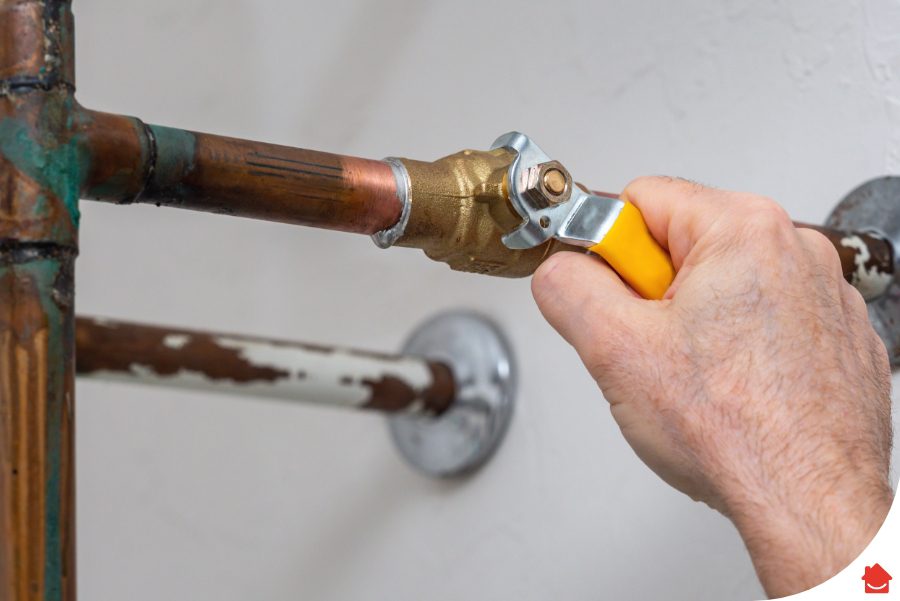If you’re a new homeowner, or landlord, there are so many things you need to know surrounding your central heating. So, for those who want to brush up on their knowledge, here’s a guide to the different types of central heating systems available and how they work.
What is gas central heating?
Let’s dive into a bit more detail about the most common way to heat your home, gas central heating, and what the different types are. You can also check out our dedicated guide to How boilers work.
Do I have central heating?
Well, if you’re like 95% of the UK population, then yes, you do.
Do I have gas central heating?
Again, it’s very likely. Around 86% of homes in the UK have a natural gas central heating system according to Statista, which makes sense because about 27 million UK homes are connected to the gas network. This means installing a gas boiler will probably be easy and the most straightforward for your property.
Central heating systems explained
There are a few different types of central heating systems used in the UK and they can be broadly split into two categories; a ‘wet’ or electric central heating system:
Wet central heating system
The majority of UK homes have a wet central heating system, which generally refers to a gas, oil or LPG boiler. In wet central heating systems, your boiler heats your water, and that heated water is pumped around your radiators (and underfloor heating if you have it).
Natural gas boiler
Most UK homes have a natural gas boiler, so we’ll go into more detail on this type of system below.
Oil or LPG boiler
Wet central heating systems also include oil and liquified petroleum gas (LPG) boilers. If you live ‘off-grid’, your system probably runs on oil or LPG rather than natural gas. The obvious sign that your central heating runs on oil or LPG is the regular need to refill the storage tank or cylinders.
Electric central heating system
There are a few types of electric heating systems:
Electric storage heaters
These are essentially radiators with little bricks inside. The power comes on overnight and the bricks heat up. Then over the course of the following day they release the heat into the room. These types of heaters aren’t as efficient as a wet central heating system and mean you don’t have much control over when your house heats up.
Electric radiators
These are radiators that you plug into the mains electricity and control independently – they’re not part of an overall system.
Infrared heating panels
These work the way sunlight does, producing heat from the light our eyes can’t see – infrared light. This type of heater warms us up because our clothes and skin soak up this light. They use electricity independently like an electric radiator.
Electric boiler
This is a hybrid of an electric and a wet system because it turns electricity into heat, which then heats the water in a wet central heating system. An electric boiler is only really suitable for a studio or one bedroom flat; it wouldn’t be able to meet the hot water and heating demands of a bigger family home.
There are a few more, lesser-used heating systems in the UK:
Warm air heating system
Warm air heating systems are pretty dated these days. They’re not wet or electric, and they’re only found in older homes that haven’t been updated. They basically pump out heat, like air conditioning in reverse.
District heating system
This is a little different from all the above examples because it means you don’t have a boiler in your home at all. Heat comes from a central hub and is distributed to many homes and buildings in one area.
Around 210,000 homes in the UK are connected to district heating systems and it’s potentially a very energy-efficient and ecologically sound system, as there’s more potential to use waste heat from other industries (eg. there’s a new district heating system planned for London using the waste heat from the London Underground tunnels).
The system’s big drawback is that it has to be part of a new development rather than retrofitted.
Solid fuel heating
A solid-fuel boiler burns a solid material like wood or coal bricks – or, more recently, biomass, a.k.a. renewable plant-based materials such as wood chips, pellets or logs.
Renewable heating
Sometimes called a low-carbon heating system, this takes heat from sustainable energy sources like the air, ground or sun. So think air source and ground source heat pumps as well as solar thermal panels. Renewable heating systems can help to lower your heating bills as well as save on energy.
How does gas central heating work?
If you have gas central heating, there are three different gas boiler types: combi, system and regular.
Combi boiler
If you’ve got gas central heating, chances are you’ve got a combi boiler, because they’re by far the most popular.
How combi boilers work?
When you open your hot water tap, your combi boiler heats water directly from the water mains and sends it straight to the tap. The boiler itself has everything it needs to heat water, so there’s no need for a hot water cylinder or tank in your loft or attic.
It does mean, however, that the amount of water it’s able to heat at one time is limited, so it doesn’t suit a home with more than 1-2 bathrooms.
Have you got a combi boiler?
If you have an airing cupboard with a hot water cylinder in it, you won’t have a combi boiler. Combi boilers do away with the need for any water tanks. Another sign is that you’ll hear your boiler fire into action any time you turn on a hot water tap.
Regular / conventional / open-vent boilers
Regular boilers are the oldest type of boiler but they are still sometimes installed in properties built in the mid-20th century. They are also called ‘conventional’, ‘heat-only’ and ‘open-vent’ boilers, but they all mean the same thing.
The system consists of a hot water cylinder, a boiler, plus feed and expansion tanks in the loft:
- Your hot water cylinder stores domestic hot water until it’s needed.
- Your feed tank stores your cold water.
- Your expansion tank holds extra space for when the water is heated and expands.
You would only consider getting a new ‘regular’ boiler installed as a direct replacement for an old one. As well as all the different parts, there’s a lot of pipework involved.
Have you got a regular boiler?
If your home is heated by a regular boiler it will have both tanks in the loft and an external pump.
System boilers
A system boiler is a kind of modern version of a regular boiler but it has certain components e.g. pump and expansion vessel built into the boiler. System boilers are pre-designed for a sealed heating system and are normally filled via a filling loop directly from a cold water supply.
With a system boiler hot water will still need to be delivered through a hot water cylinder, this cylinder could be either unvented or vented .
A system boiler coupled to a hot water cylinder can meet the high demand for hot water of a larger property with multiple bathrooms (a combi boiler just can’t do this).
Have you got a system boiler?
You’ll know if you have a system boiler if you have a large house with a hot water cylinder but you have to repressurise your boiler via a filling loop. System boilers don’t need to have a tanks in the loft as they are part of a sealed heating system and filled through a filling loop direct from a cold water supply, if you have an open vented hot water cylinder you still need a cold water storage cistern in the roof space.
Installing a condensing boiler
If you are looking for a new gas central heating boiler, you might be wanting to switch from a system boiler to a combi boiler, or upgrade to the required standard for all new boilers; the condensing boiler.
Condensing boilers are the most energy efficient of all boilers – and for good reason. In layman’s terms, condensing boilers recycle the latent heat produced from the combustion process and use it to heat the water entering the system. All new installed boilers must now be condensing boilers. They are much more energy efficient and – aside from the occasional frozen condensate pipe in winter.
Need a new boiler?
If you need a new boiler installation right now, we’re working with BOXT who can install one within as soon as the next day if you order before 4pm*. Plus, our boiler cover and heating breakdown insurance can protect it for as little as £9 per month.
FAQs
How does gas central heating work?
Gas central heating is a wet central heating system, where your boiler uses gas as fuel to produce heat. It heats your water, and that heated water is pumped around your radiators (and underfloor heating if you have it).
How do I know if I have gas central heating?
You’ll know if you have gas central heating if you have a boiler in the kitchen or a cupboard that’s supplied by gas pipes. Older models may have a small window on the front of the box where you can see a blue flame when the boiler is fired up, but modern boilers don’t.
What is the best central heating system to have?
In terms of energy-efficiency and looking after the planet, energy from renewable sources is the best. If you have a flat or a house with 1-3 bedrooms and a couple of bathrooms, a condensing combi boiler is your best bet. If you have a bigger house, get a system boiler.
*Subject to engineer availability




